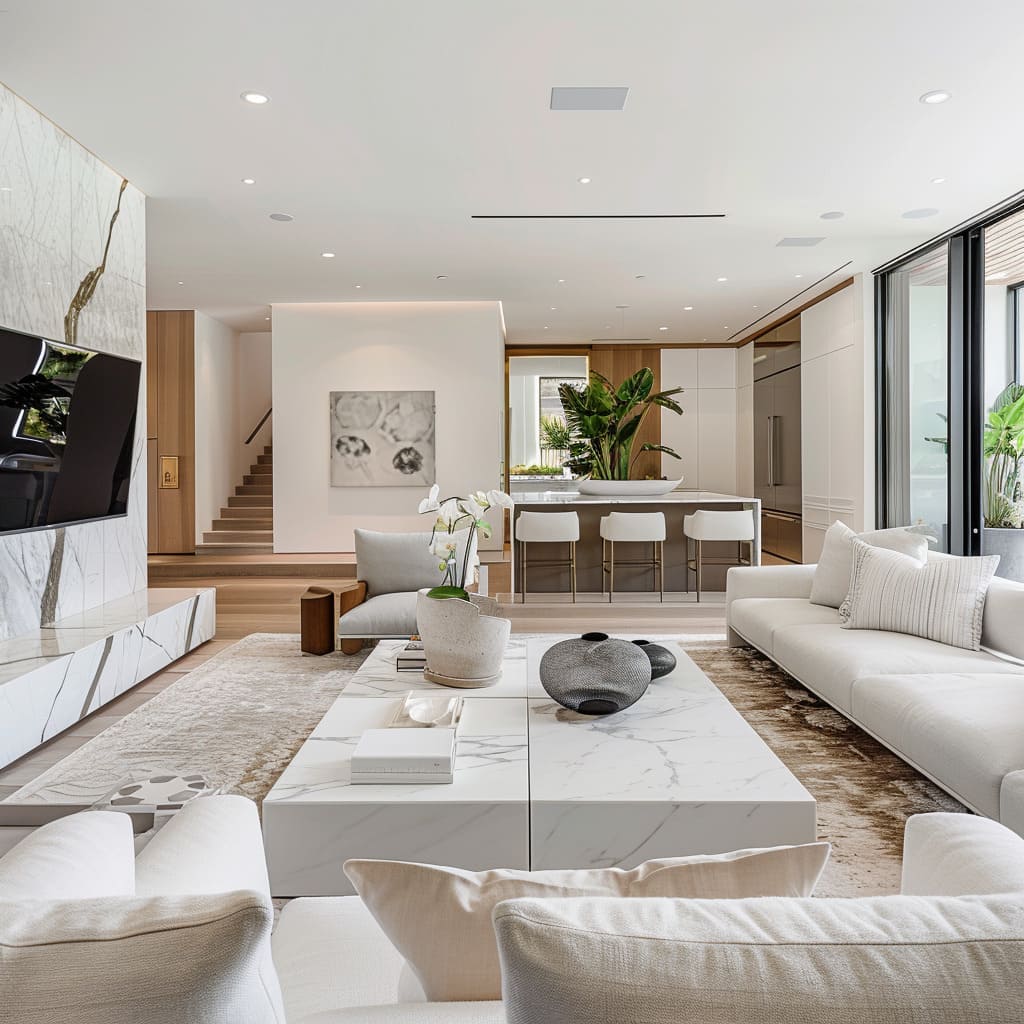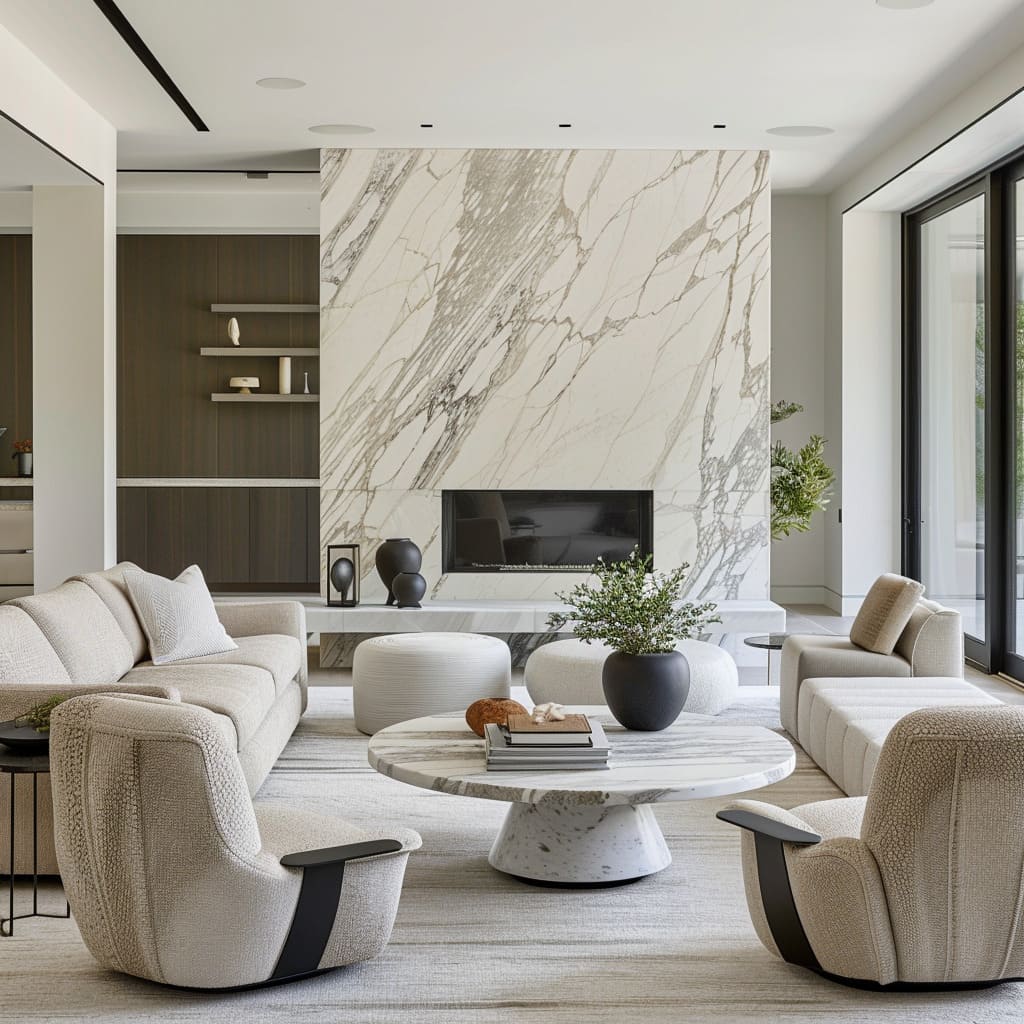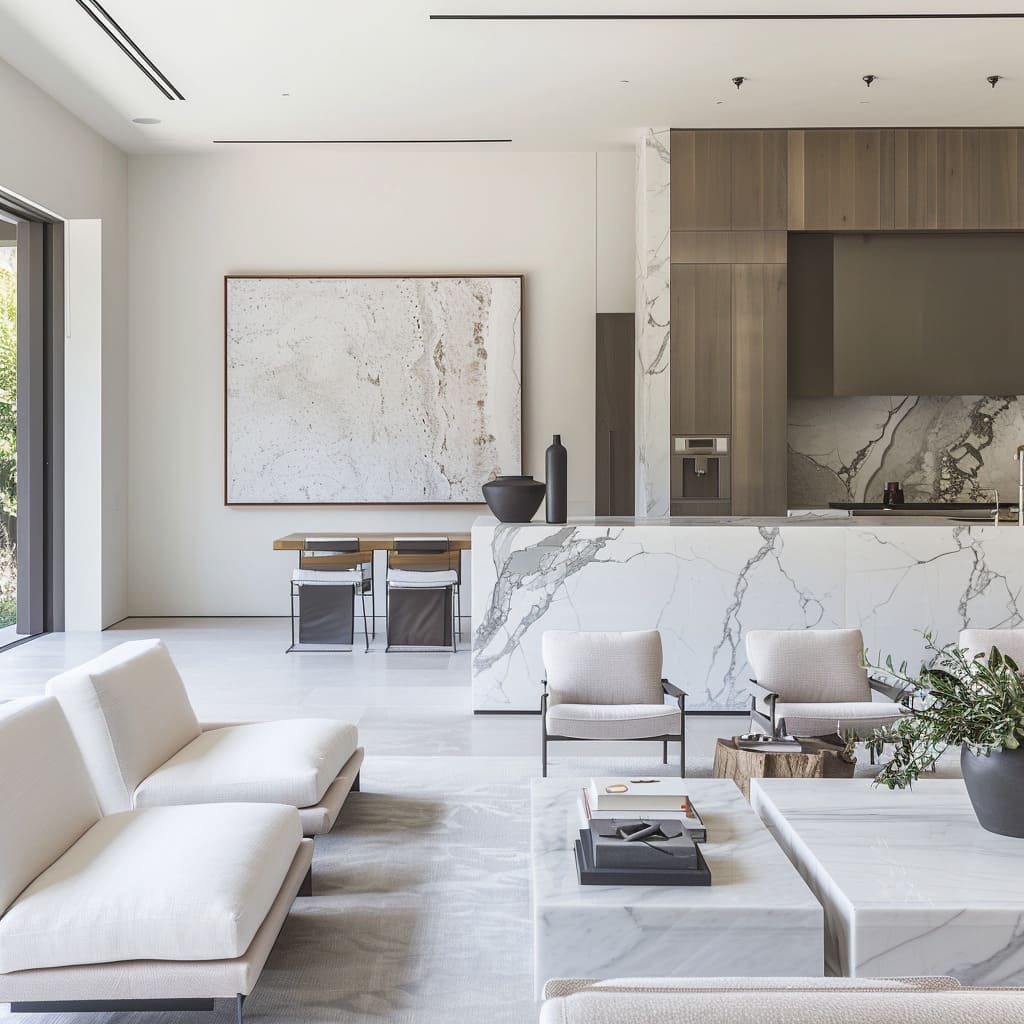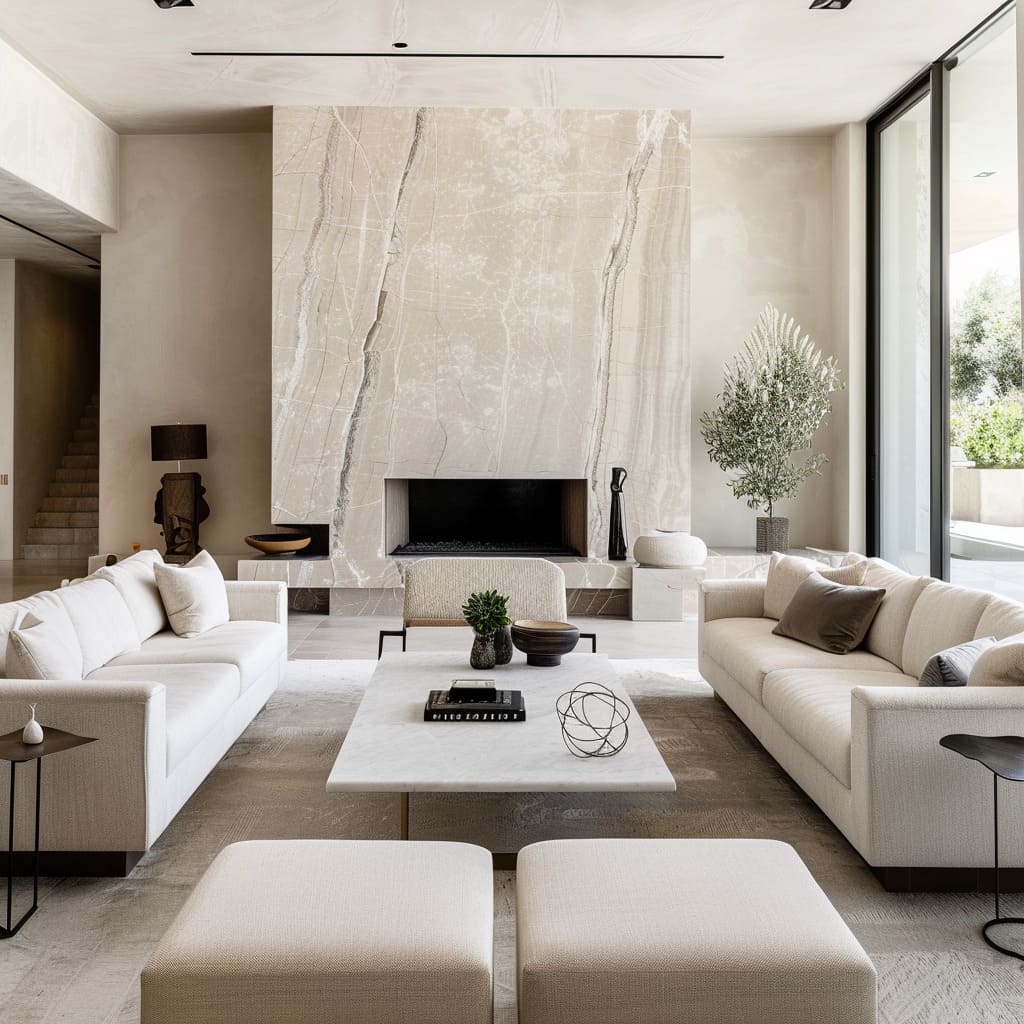The modern world moves quickly, and within it, there’s a growing yearning for the simplicity and tranquility that minimalist design can offer. This design philosophy champions spaces that breathe freedom and peace, distilling the essence of a home to its functional beauty.
The elegance of minimalist design lies not in opulence, but in the careful curation of items that together create a cohesive and tranquil space. Dismissing the misconception that achieving such an environment is a luxury only the affluent can afford, this article sets out to show how modern minimalist design is not only approachable but also achievable on a budget.
The goal is to present practical strategies for readers to craft an inviting, minimalist aesthetic without overextending financially.
At its heart, minimalist design is about stripping back to the basics to highlight the beauty of the space itself and the purpose of each piece within it. It’s a conscientious return to quality, where each item is chosen not just for its appearance but also for its durability and functionality.
Instead of a multitude of disposable items, a minimalist home focuses on a few well-chosen pieces that stand the test of time.
This principle supports sustainable living, reduces waste, and ultimately saves money. By carefully selecting these pieces, homeowners can create a living space that feels both inviting and intentional.
It is this thoughtful process of selection that ensures a minimalist home is not a stark space, but one filled with items that tell a story, offer comfort, and serve a purpose.
You don’t need to undertake extensive renovations to achieve a minimalist aesthetic that leaves a lasting impression. Simple alterations can make a significant difference.
Consider the flow of your space; removing bulky furniture can open up a room, giving the illusion of more space and creating a sense of peace. A single coat of paint in a light, neutral hue can refresh a room, highlighting architectural features and improving light reflection.
For the DIY enthusiast, crafting a simple piece of furniture or re-purposing a thrift-store find can not only be a fun and rewarding project but also instill your space with a sense of personal achievement. These minor, budget-friendly changes can align your environment more closely with minimalist principles, promoting a sense of well-being and clarity in your home.
Smart shopping is a cornerstone of achieving a minimalist design affordably. High-quality, minimalist furniture is characterized by its simplicity, clean lines, and timeless appeal – and these pieces can often be found without exorbitant price tags if you know where to look.
Embrace the minimalist mindset when shopping: seek out furniture that embodies simplicity and is built to last.
This could mean visiting flea markets, exploring estate sales, and scouring online classifieds for pieces that can be given a second life. The practice of upcycling can be particularly rewarding in a minimalist home, not only from a creative standpoint but also in contributing to a culture of sustainability and thoughtful consumption.
A minimalist home doesn’t have to be devoid of warmth or texture. The secret lies in selecting the right materials and colors that evoke the same serene and pure effect as their more expensive counterparts.
Advances in manufacturing have made high-quality laminates and veneers that replicate the textures of natural wood or stone accessible for those on a budget.
These materials can be used in everything from flooring to countertops, providing the minimalist look without the high costs. When it comes to color schemes, minimalist doesn’t mean monochrome.
You can introduce a palette of muted tones that will endure shifting trends and personal tastes, minimizing the need for repainting and redecorating. The right colors and materials can create a minimalist environment that is both inviting and resilient, ensuring a timeless elegance that won’t break the bank.
In minimalist design, each item not only should look appealing but also serve a purpose, ideally more than one. Furniture that multitasks is an exceptional asset in such spaces.
A sleek sofa bed can transform a living area into a guest room, an extendable dining table can double as a workspace, and ottomans with storage can hide away linens or children’s toys when not in use.
This approach not only saves space but also reduces the need to purchase additional pieces, aligning with the minimalist principle of reducing excess. Look around your current space for furniture that could be re-purposed to better serve a minimalist design.
An old dresser, for instance, could be stripped back and repainted to serve as a TV console with storage.
A minimalist space need not be devoid of personality. In fact, carefully chosen decorative elements can introduce charm and a sense of identity to your home.
The key is to find affordable pieces that speak to your style. Markets and online platforms offer a plethora of budget-friendly options, from handmade ceramics to locally crafted textiles.
These items often come with a story, adding a layer of richness to your space without overwhelming it. When selecting decor, remember the minimalist adage: less is more.
Choose a few standout pieces that really draw the eye and complement the serene environment you are cultivating.
The tactile elements of a home such as textiles and fabrics can add an immense sense of comfort and warmth. Affordable luxury in this department is not an oxymoron.
High-quality fabrics at lower price points are available, especially if you are willing to hunt through sales or online deals. Durable fabrics like linen or certain synthetics can offer a premium feel without the premium cost and tend to last longer, offering better value for money.
Consider also the transformative power of simple throws or cushion covers that can update old furniture instantly and affordably. In a minimalist home, technology should enhance the living experience without causing clutter or chaos.
Opt for tech solutions that streamline your life – think smart thermostats or lights that reduce energy consumption, or wireless systems that eliminate the need for cords. Invest in technology that fits seamlessly into your design, like speakers that can be mounted out of sight or TVs that resemble art when not in use.
Additionally, resist the allure of the latest gadgets unless they serve a clear, functional purpose in your home. This strategy ensures that technology serves you, rather than distracts, and preserves the clean lines and calmness of your minimalist space.
Lighting is a crucial element in setting the tone of any minimalist space. It should enhance the serene atmosphere without becoming a focal point itself.
Utilizing natural light is the most cost-effective way to illuminate your space during the day, so consider rearranging your layout to maximize sunlight.
For artificial lighting, LED fixtures offer an economical and energy-efficient solution, while providing the bright, even light that is synonymous with minimalist interiors. Strategically placed floor lamps or wall sconces can also create soft pools of light, adding dimension to a room without the need for expensive installations.
By choosing the right lighting solutions, you can maintain a serene minimalist aesthetic without compromising on visibility or ambiance. The essence of minimalist design is not static; it can evolve with the seasons and adapt to various occasions without requiring an extensive collection of decorations.
The key is to choose versatile decor elements that can be subtly altered or rearranged to signify a change in time or celebration.
For instance, a neutral vase can be filled with branches in the fall or fresh flowers in the spring, and a simple table runner can be switched out for different textures or shades to match seasonal themes. Investing in such adaptable items ensures your space remains relevant and dynamic throughout the year without the need for constant and costly updates.
The maintenance of a minimalist home is as much about mindset as it is about practicality. The commitment to decluttering is ongoing, requiring regular reevaluation of items to ensure they still serve a purpose or bring joy.
Organizational systems are vital; when everything has a place, keeping the home tidy becomes effortless. Maintaining clean surfaces is also easier in a minimalist space; a quick wipe-down can often refresh the entire area.
Adopting habits like immediately addressing mail, washing dishes after use, and routinely donating unused items can help sustain the minimalist aesthetic you’ve worked to achieve. Minimalism is particularly effective in smaller homes, where the constraint of space necessitates a thoughtful approach to design and organization.
In these environments, every inch counts. Opt for furniture that fits the scale of the room or can be folded and stored away when not in use.
Wall-mounted shelves and hidden storage utilize vertical space and keep the floor clear. Mirrors can also play a role in expanding visual space, giving the illusion of a larger room.
These strategies allow for a home that feels spacious and stylish, even within limited square footage. Bringing elements of nature into your home serves a dual purpose; it enhances the minimalist decor and connects inhabitants with the natural world, improving overall well-being.
Indoor plants, a simple arrangement of stones, or a bowl of sand can introduce texture and life into a minimalist space at a minimal cost.
This concept, known as biophilic design, not only makes aesthetic sense but can also purify the air and create a serene, living environment that changes and grows with time, just like the natural world outside. Adopting a minimalist approach extends beyond design; it’s a lifestyle choice that can lead to significant cost savings and a calmer state of mind.
By focusing on what is essential, one learns to curtail impulsive buying and appreciate the beauty of simplicity. This can result in less financial strain and a more sustainable way of living.
Moreover, the minimalist lifestyle can provide mental clarity, as a decluttered space can lead to a decluttered mind, freeing up energy and attention for more fulfilling pursuits.
Minimalism, with its emphasis on simplicity and intentionality, is not the preserve of the few but a viable and rewarding choice for many. It is a design and lifestyle philosophy that transcends budget constraints and space limitations.
By focusing on the core principles of minimalism, such as functionality, simplicity, and beauty, anyone can create a space that is both calming and functional. This article has outlined practical ways to achieve a minimalist home, demonstrating that this elegant and poised aesthetic is within reach for all who are drawn to its serene allure.
Whether you are downsizing your possessions, seeking tranquility in your living space, or looking to save money, a minimalist home is not just a design trend—it’s a pathway to a more thoughtful way of living.




























